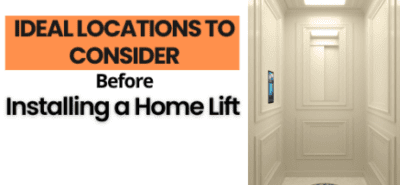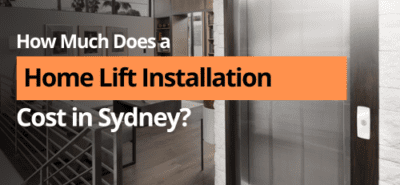Home elevator purchase and installation contract tips
With the popularity of home elevators and an aging population, more and more homeowners in Australia are deciding to buy and install home elevators.
There are many brands and types of home elevators. How to save time and improve efficiency, and avoid unnecessary losses when choosing a home elevator is something every customer must consider.
First comes first is determining your needs and budget.
The budget for a home elevator ranges from 20,000 to 80,000 variably.
If it is simply to meet the mobility needs of people with limited mobility or the elderly at home, then you can choose to install a less expensive shaftless elevator.
In addition to this, if you think about the longer term and enhance the value of your property, we must also take into account aesthetics and riding comfort. After all, buying and installing a home elevator is not like buying a car, which can be replaced at any time. To remove or refurbish a home lift will involve the cost of time and effort.
As one of the factors impacting the installation, it is also necessary to consider whether the home elevator is built in a new home or an old house. Is the house wooden or concrete?
Regarding which factors affect the price of home elevators, we have discussed in detail in an article before, and the above is just a brief introduction.
Secondly, how to choose a home elevator company?
You can start with the success stories around you, ask about other user’s experiences, or use your keywords to search on the Internet. It is recommended not to expand the range too much, generally choosing 3 to 4 dealers is enough.
You can leave a message with the home elevator dealer by phone or online, and their sales or the receptionist will call you back to inquire about your brief ideas and determine the time for the first on-site inspection if the home lift is going to be built in an existing house.
When they are investigating your property, you should try to be proactive in discussing your needs with them and listening to their suggestions and solutions. They will describe the features of the elevators of their brands and how to arrange a solution for your needs.If it’s going to be a new home, you will also be asked to provide the architecture drawings.
With the basic information obtained from the first visit or the drawings, the elevator company is able to issue you a proposal or quotation. The quotation mainly includes some basic parameters of the elevator, such as load, control system, hoistway size, car size, speed and materials. At this stage, it is only to let you have a preliminary understanding and judgment of these products, prices and functions. More specific details will be finalized when the contract is signed with the manufacturer and the order is confirmed.
With the prices and products they offer, you’ll have to do a more detailed inspection of your goals, such as visiting a showroom, or at least looking at overall and partial material and installation renderings. After the first round of comparison, I believe that you have reached a conclusion and more specific requirements. Now you can select one or two dealers and make a quotation to confirm that it meets your budget. So far, most elevator companies have provided free services.
Note that a typical elevator contract will not include any construction that would alter the original structure and surface materials of the home. This part of the construction and costs need to be arranged and paid by the owner separately. But customers can negotiate with elevator dealers, and it is generally recommended to work with construction teams they are familiar with.
When the various drawings have been confirmed and signed, it is time to sign the contract.
The content of the purchase and installation contract of a home elevator includes the home elevator model, specifications, functions, materials, dimensions, speed, rated load, as well as various auxiliary plants and equipment required for the building lighting, safety and power supply and construction process. Of course, it also includes payment methods and instructions on how to compensate if there is a breach of contract or overdue delivery during the performance of the contract.
With regard to payment, it occurs at various stages of the performance of the contract. The contract can be packaged for sale, installation and after-sale maintenance, or signed separately.
The first payment occurs when the purchase contract is signed, generally 40% to 50% of the total price;
The second payment occurs when the manufacturer confirms the order and starts fabricating, generally 30% to 40% of the total price;
The third payment occurs when the entire elevator equipment arrives at the construction site, generally 10% to 20% of the total price;
The fourth payment to pay off the balance is usually 10% after the home elevator has been debugged and the customer signs and hands it over.
After the full contract payment is settled, the home elevator generally provides a warranty period of at least one year. During this period, the home elevator seller is responsible for any failures caused by non-customer or building or power supply factors.
After the one-year warranty period, customers can enjoy regular maintenance and repair services under a pre-signed or separately signed maintenance contract.
I hope that through the summary and sharing of this article, you can have a clear understanding of how to plan to buy a home elevator and sign a sale and installation contract.
Follow us, follow House of Elevators.



